AkiTio MyCloud Duo Networked Attached Storage Device
AkiTio
Price: $149.99 U.S.
I’m a big cheerleader of the network attached storage concept. In a previous job, back in the mid 1990s, my department server (two 1 GB drives) was running out of space. I was able to obtain a Quantum SnapServer with four 20 GB drives, which, due to RAID overhead, meant about 55 GB of usable space (whee!). It did the job for my department until my employer’s IT department wouldn’t let me administer my department’s data anymore and forced me to move the data to company servers. But I digress. At home, I own a crazy expensive 7.5 terabyte Synology DS-509+ and accompanying 10 terabyte Synology DX5 expansion unit (the DX5 connects to the DS-509+ via a fast eSATA connection). I use the first to back up to the second. There’s plenty of storage for my media (hundreds of backed-up DVDs, my iTunes library, and backups of my other computer). Heck, there’s enough storage for a medium-sized office! I use Plex as the media server application on my 2.5 GHz Core 2 Duo Mac mini. Plex, for the most part, seamlessly accesses my stored media on the Synology NAS and plays it on my HDTV.
About the Device
But this is a review of the AkiTio MyCloud Duo NAS—not my sordid past. The MyCloud Duo NAS is quite small, at 7 in x 4.8 in x 3.2 in. In terms of sheer functionality, however, this device is basically the same as most other two-drive NAS devices on the market. In other words, full-featured. Virtually any dual-drive NAS released within the last year or so is going to be a positive addition to your home theater or simply for storage of a lot of data.
The MyCloud Duo NAS runs a Linux-based operating system and uses a number of open source applications and services to make it a good neighbor on Mac (Apple File Protocol), Windows (SMB), and Linux/Unix (NFS) file systems. The user interface is accessed via a web browser, and offers a plethora of configuration options. You can set up multiple users; you can configure the hard drives in RAID 0 (striped), RAID 1 (contiguous), or JBOD (just a bunch of disks) configurations. It has two USB 2.0 ports which can be used to connect external drives that will be seen on the network. In fact, if you happen to have one or two large-capacity external drives, you could choose to not install any internal hard drives at all, and just use the external drive(s). The MyCloud Duo NAS device supports gigabit Ethernet with its single RJ45 connector. It can work as an iTunes server, and is a fully-functional media server, supporting the UPnP (Xbox 360, PlayStation 3, iTunes, DLNA certified UpnP clients, and Windows 7) standards. This means that other DLNA-compatible devices, such as TVs, top-line video game consoles, DVD and Blu-Ray players, etc., can quickly find your NAS on your network and can play back content stored there without needing to log on and enter passwords and such—very difficult with a TV remote.
The MyCloud Duo NAS supports Apple Time Machine standards, permitting use of this device as a place to back up files. There’s also a print server (handy for putting USB printers on your network). You can access social media sites like Facebook, with the promise that future firmware releases will support Flickr and youTube. As this device includes mail server software, you can use your MyCloud Duo NAS device to automatically notify you if certain system events occur (backup failed, power failure and restore, etc.). But like I said, most dual-drive NAS devices on the market can perform the same core functions as the MyCloud Duo NAS. Heck, most of them are probably using the same open source Linux software.
The Cloud Without the Cloud
What sets this NAS apart from the competition is the cloud service that has been established by the manufacturer. With this novel software, you can access your MyCloud Duo NAS from anywhere on the Internet as if it were a cloud server. You only need to log into the device through a web page that points to AkiTio. Then, AkiTio routes the data traffic to your device wherever it is located. You are not storing your data on “some drive somewhere out in the ether,” which is the very definition of the cloud, and something that, frankly, still makes me a little uneasy. Instead, you are storing your data on your own disk drive, wherever you have chosen to install it. The free service from AkiTio acts as an intermediary, and increases security. This is an exceptionally useful feature. More on this later.
What’s in the Box
The box contained the MyCloud Duo NAS, nicely wrapped and sealed in plastic, and surrounded by a two-piece foam cusion. A short RJ-45 cable and two small screws in sealed “baggies,” a quick-start manual, a software CD, and a power supply are also provided.
Setup
Installing the drives couldn’t be easier. Per the (very brief) multi-language quick-start manual (more detailed configuration instructions are provided on AkiTio’s excellent wiki site), there is a single small cross-point screw under the front panel.
With that screw removed, the panel easily separates from the housing and it’s then that you discover perhaps the easiest hard drive installation ever. There are no brackets or screws to worry about. Just slide a 3.5 inch form-factor hard drive into each of the two bays.
Your drive’s eSATA connector connects to a mating eSATA connector in the enclosure. That’s it. Replace the front cover, reattach the screw, connect power and network, and you’re ready to power it up. Having this interesting mounting scheme is one of the keys to making this device one of the smaller ones on the market.
Now that you are ready to power this puppy up, push back for a moment, take a deep breath, and review the AkiTio wiki site at http://wiki.myAkiTio.com/. As you begin setting up your MyCloud Duo NAS, this site needs to be your friend and constant companion. The supplied user manual is only there to get you through the basics of installing the hard drives and getting you through initial power-up.
When you first power-up the MyCloud Duo NAS, use the supplied iSharingFinder tool (Mac and Windows versions of this tool are on the CD) to locate it on your network. The device automatically connects to your network using standard DHCP (dynamic host communication protocol) protocols, requesting and receiving an IP address from your primary network host (usually your router, or perhaps a combo Cable/DSL modem and router), but this doesn’t exactly help you locate the IP address of the MyCloud Duo NAS device. That’s why you need the supplied iSharingFinder tool, which locates a number of networked devices, and not just the MyCloud Duo NAS (I suspect, but can’t confirm that it uses Apple Bonjour technology to do so, as other Bonjour-capable devices on my network showed up in the iSharingFinder “found devices†window, including my Synology NAS, my Brother laser printer, and the MyCloud Duo NAS). When you select your MyCloud Duo NAS device, the Connect button is enabled. Click the Connect button. This launches your web browser and opens a login screen.
The first time you do this, a web page opens, requesting your home server name. This is how you register your device with AkiTio. AkiTio uses the MAC address of your MyCloud Duo NAS to identify it. You can find the MAC address on a label on the bottom of the device, as well as on a sticker attached to the side of the box it was shipped in. Enter the MAC address (without the usual “:†separators) in the data entry field and click the Enter button. You can also change this home server name in the Registration window to something you might more easily remember. If you don’t do this during initial configuration, you can access the Registration function from the Control Panel.
Login for the First Time
After a few seconds, after AkiTio locates your device on the Internet, a login window is displayed. The default login is the ever popular admin (for user name and password). You should create a new administrator account and delete or at least disable this one as soon as possible. You can do so by clicking the Accounts button in the Control Panel. But first, you need to configure the disk drives.
For most users, just launch the Disk Manager and click the Auto radio button. The device automatically formats itself for RAID 1 (mirroring, or writing identical data to two drives—in this case), so be prepared to wait. If you had large unformatted drives like me, prepare to wait for three to four hours for the drives to complete formatting and RAID configuration. This is normal. It took me almost a full day for my 7.5 TB Synology NAS’s drives to format and perform RAID configuration. Once you have done this, assign your RAID array as the host in the Disk Manager (a selection option). It automatically sets up folders for music, video, movies, and other stuff.
Configuration
Now it’s time for NAS configuration. Bring up the Control Panel in your web browser and start moving through the array of icons that beg to be played with. To make it a little easier on yourself, please review AkiTio’s wiki as you wade through the various options and features. It’s going to be a little inconvenient if you are configuring your MyCloud device with a 13 inch laptop. You will be much happier if you can make use of a larger monitor during this time of learning and configuration. Without a second monitor or a large (22 inch widescreen, for example), you are going to be swapping windows between the wiki and the Control Panel. A lot. That said, I’m not going to go through all the features as this review is already much too long, and most NAS devices are configured in a very similar way, using the Control Panel metaphor. It’s not that different from the System Preferences panel in MacOS X.
iSharing – Making Your Own Cloud
What I do want to talk about is interactive sharing, or iSharing. iSharing is a process where you can connect to your MyCloud Duo NAS from anywhere there is an Internet connection. This is really slick. If you are connecting from a desktop or laptop computer (Mac, PC, Linux – it doesn’t matter) web browser, simply type in http://[MAC Address].myakitio.com. A login screen comes up. Enter your particulars, click OK, and you are now connected to your MyCloud Duo NAS device. This means you can watch movies with your standard media players (QuickTime, Windows Media Player, etc.), listen to your music, look at your pictures, and so on, from anywhere in the world that you can connect to the internet (preferably a broadband connection—especially for video). You can also upload documents to your MyCloud Duo NAS device by clicking the Upload button on the menu bar within the interactiveSharing (My Server) window (Mac users would call it a Finder). A new window pops up. Second from the left is the Upload button. Click it, and a choices dialog box pops up. You can do your uploads one of three ways:
- With a standard HTML form that lets you browse for your file on your computer or attached network device, select it, and upload it, one file at a time,
- You can install Google Gears as a plug-in into your web browser (lets you drag and drop files to and from your remote connection window), but that option goes away December 31, 2011 (and it is not compatible with the latest browsers) when Google removes Google Gears from their site.
- If you are using a new browser, one compatible with HTML5, that’s the best option of all. This one lets you drag and drop files as a native function of the browser. A window pops up, into which you can drag and drop multiple files for uploading to your MyCloud Duo NAS device. Downloads are equally easy. You can also do this from the Downloads control (on the toolbar), with the addition of being able to manage torrents.
The MyCloud App
The pièce de résistance is a pair of mobile apps for your i-devices (go to the iPhone App Store and do a search for AkiTio), where you will find several useful apps. The one that’s really helpful is the MyCloud app. Use this to access your MyCloud Duo NAS device from anywhere—3G or Wi-Fi, and then upload and download files. One word of advice from a quick test of this function: do not try to view video in the MyCloud app over a 3G connection, unless you are sure the file has been optimized for web viewing, such as an MP4 or M4V video file that has been compressed for viewing on an iPhone or iPod. I tried viewing (over a strong 3G connection) a 1GB .M4V file that I moved to the MyCloud Duo NAS device and it just never happened. Unlike the Plex media server application and their i-device app, this media player does not seem to have a transcoder to reduce file size on the fly. This is probably impractical with the low-power processor in use on this device. I did see some disk activity on the device’s front panel indicator, but nothing ever showed up on the screen. However, when I switched to Wi-Fi, once 30 seconds or so of video was buffered, it ran fine with no hiccups.
Of course, you can also access your MyCloud Duo NAS device from the Mac Finder as a local network drive using the Go>Connect to Server… function.
File transfer performance over my home network was reasonable, and comparable to my Synology NAS. DLNA compatibility was problematic, but not because of the MyCloud Duo NAS. My Sony HDTV claims full DLNA compatibility, but it won’t view files from my Synology NAS either. My Plex media server app, running on a Mac mini, which I use to access my Synology NAS for music, video, and photos, was able to connect to the MyCloud Duo NAS as a DLNA client (no login needed) and play a movie over my home network with nary a glitch.
In Summary
The AkiTio MyCloud Duo NAS, at under $150, is a bargain and a half. Setup for a novice may be a little tedious, but most NAS configurations can be a tad challenging. Keep in mind that you are in effect configuring a new computer. This one is no different in that respect. Review the content on the AkiTio wiki site, ignoring for the moment the grammar that indicates it was written by someone for whom English was definitely their second language.
When finished, and once you have taken advantage of the great iPhone/iPad app, you should agree that this is an inexpensive, convenient, and secure (remember to follow the secure password rules!) way to manage your files when far away, or just away from home or office.
The only major beef I have with this device is that the fan, for such a tiny device, sounds like a hurricane. It’s louder than both Synology NAS boxes which are sitting in a corner in my living room. I can barely hear them (I think my Mac mini is louder). The MyCloud Duo NAS, on the other hand, if it were to be used as a media server, would have to be banished to a closet or maybe your computer room (if it isn’t the living room). Being that it is a network device, this isn’t a huge inconvenience. Another minor beef is the minimal printed documentation, and that there was no mechanism (at least none that jumped out at me) to print the whole Wiki site, which may be helpful for people who have smaller computer screens. Those are the justifications for me for the still quite good rating.
MyMac Review Rating: 8 out 10

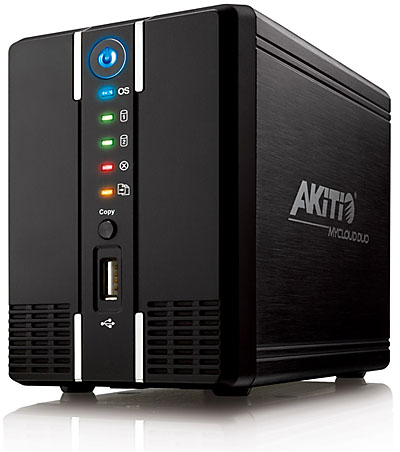
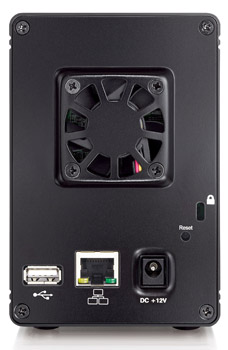
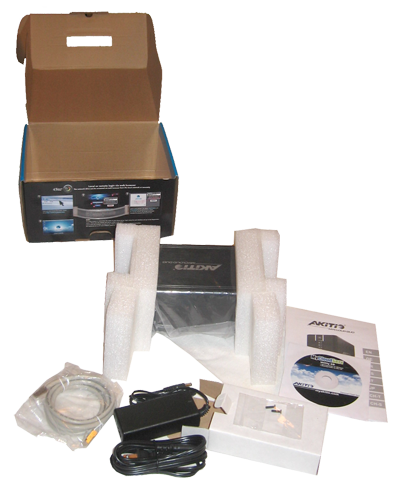
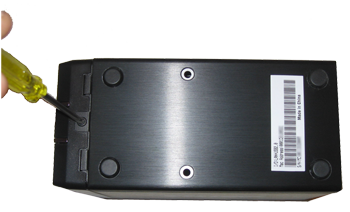
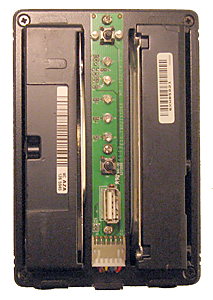
Leave a Reply
You must be logged in to post a comment.